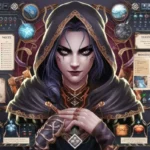Introduction
In the age of memes and digital communication, reaction images have become a staple of online discourse. Among these, “silly reaction image drawings” hold a special place. These images, often hand-drawn with a humorous twist, serve as a playful medium for expressing emotions, opinions, and reactions to various scenarios. This article delves into the essence of silly reaction image drawings, their cultural impact, and why they continue to be a beloved form of digital expression.
The Essence of Silly Reaction Image Drawings
Silly reaction image drawings are characterized by their exaggerated expressions and whimsical art style. Unlike polished graphics or professional illustrations, these images often embrace a more carefree, doodle-like aesthetic. They might feature stick figures with oversized eyes, absurdly simple backgrounds, and comically oversized facial expressions. This simplicity is part of their charm, making them accessible and relatable.
The humor in these drawings often comes from their over-the-top portrayal of emotions. A single line drawing can convey a complex range of feelings from utter confusion to sheer joy with just a few strokes. This simplicity allows for quick communication of sentiments, making them perfect for fast-paced online interactions.
Cultural Impact
The cultural significance of silly reaction image drawings extends beyond their humorous nature. They represent a democratization of art and expression, where anyone with basic drawing skills and a sense of humor can contribute to online culture. These images often spread virally, transcending language barriers and reaching a global audience. They become part of the shared online lexicon, influencing how people express themselves digitally.
One notable aspect of these drawings is their role in meme culture. Memes often rely on a visual shorthand to communicate complex ideas quickly. Silly reaction image drawings fit perfectly into this framework, offering a visual representation of reactions that can be easily adapted and shared. They provide a form of digital graffiti, where individuals can leave their mark on the vast canvas of the internet with a simple, yet impactful, image.
The Evolution of Silly Reaction Images
The evolution of silly reaction images reflects broader trends in digital culture. Early examples might include basic emoticons and early internet memes, which used text and simple graphics to convey emotions. As internet culture evolved, so did the complexity and creativity of reaction images. The advent of social media platforms and meme generators has made it easier for users to create and share their own silly reaction drawings.
Platforms like Reddit, Twitter, and Instagram have played a significant role in popularizing these images. On Reddit, for example, subreddits dedicated to memes and reaction images provide a space for users to showcase their creations and interact with others who appreciate this form of humor. Twitter and Instagram further amplify the reach of these images, allowing for rapid sharing and widespread dissemination.
The Art of Creating Silly Reaction Images
Creating a successful silly reaction image involves more than just drawing funny pictures. It requires an understanding of current trends, cultural references, and the nuances of digital communication. Artists often draw inspiration from everyday situations, internet trends, and popular culture. The key to a memorable reaction image lies in its relatability and timing.
To create an effective silly reaction image, one must consider the following elements:
- Exaggerated Expressions: The core of a silly reaction image is its exaggerated portrayal of emotions. Large, expressive eyes, wide-open mouths, and dramatic body language are essential for conveying the intended reaction.
- Simplicity: The best reaction images are often the simplest. Overly complex drawings can detract from the humor. A clean, straightforward design helps ensure that the reaction is immediately understood.
- Contextual Relevance: Tying the image to a current trend or cultural reference can enhance its impact. Reactions that resonate with contemporary issues or popular media tend to be more effective and shareable.
- Creativity and Originality: While many reaction images follow a similar format, adding a unique twist or personal touch can make an image stand out. Originality can set a reaction image apart from the countless others circulating online.
Conclusion
Silly reaction image drawings are more than just a form of digital amusement; they are a reflection of the evolving nature of online communication and creativity. Their appeal lies in their simplicity, relatability, and the joy they bring to both creators and viewers. As digital culture continues to evolve, these whimsical drawings will likely remain a cherished part of the online experience.
In a world where digital interactions often feel impersonal, silly reaction images offer a reminder of the fun and spontaneity that can still exist in our online lives. Whether you’re crafting a drawing to capture your own reaction or enjoying those created by others, these images provide a delightful way to engage with the digital world. As long as there are emotions to express and humor to share, silly reaction image drawings will continue to be a beloved part of our online culture.



